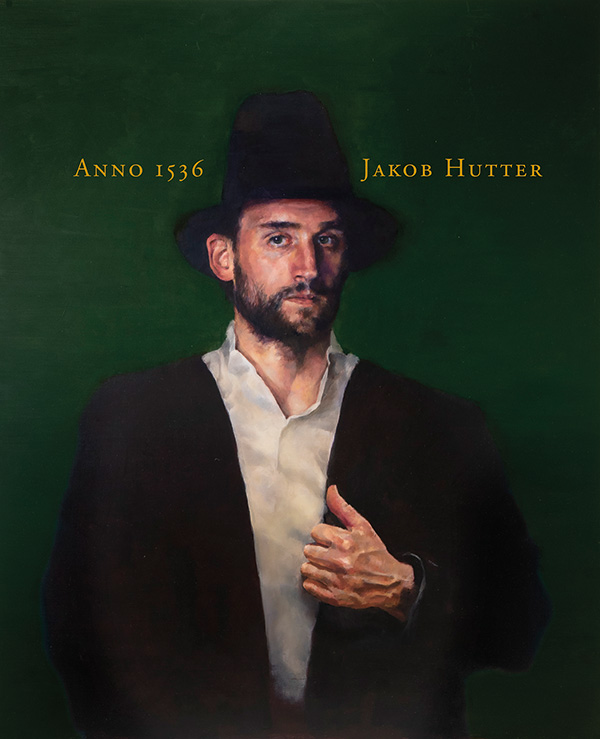Subtotal: $
Checkout-

Covering the Cover: Freedom
-

Disciplines for Freedom
-

The Open Road
-

We Are All Fiddlers on the Roof
-

Bad Faith or Perfect Freedom
-

American Freedom and Christian Freedom
-

Jane Eyre Holds Her Own
-

Becoming a Free Person
-

In Defiance of All Powers
-

Recovering from Heroin and Fiction
-

The Workers and the Church
-

The Body She Had
-

Encounters at the Southern Border
-

A Lion in Phnom Penh
-

Become Slaves to One Another
-

Form and Freedom
-

Paraguayans Don’t Read
-

The Bible’s Story of Freedom
-

The Autonomy Trap
-

An Exodus From China
-

Yearning for Freedom
-

Taking Lifelong Vows
-

Poem: “And Is It Not Enough?”
-

An American Mother Forgives
-

I Cheerfully Refuse Despair
-

The Glory of God Is a Human Being Fully Alive
-

Arvo Pärt’s Journey
-

Readers Respond
-

The Forgiveness Project
-

Humanizing Medicine
-

The Busted Bean

Jakob Hutter, Radical Reformer
In just three short years, the sixteenth-century martyr founded a church that has endured to this day.
By Emmy Barth Maendel and Susannah Black Roberts
October 5, 2024
It was the Feast of the Ascension in May of 1535, when Jakob Hutter, his wife, and his companions were driven out of Auspitz, a small vineyard town in the south of Moravia in today’s Czechia.
The congregation had been safe in Moravia for more than half a decade at that point, free to practice their Anabaptist faith according to the dictates of their consciences. This was due to the groundwork that Jan Hus had laid one hundred years before. Many of the Moravian nobles were Hussites, and had been so for one hundred years, the remnants of that Reformation avant la lettre, and they extended protection to their younger brothers.
But Moravia was still, for all its tradition of tolerance, part of the Kingdom of Bohemia, itself a vassal state of the Holy Roman Empire. The King of Bohemia was the Habsburg Archduke Ferdinand I. And Ferdinand was nervous.
In 1525, the peasants of Central Europe had rebelled with shocking violence all the more disturbing because it was decentralized. That rebellion had had something to do with the new doctrines, though Martin Luther had condemned it roundly. In 1533, not far away in Münster, the fanatical and not-at-all-pacifist Anabaptist Jan van Leiden had taken over the city and begun running it as an oppressive theocracy; only with great difficulty was the city retaken.

Photograph by Agata Kadar. Used by permission.
Ferdinand was taking no chances in his realm of Bohemia. He himself attended the diet of 1535, demanding that the Moravian nobility stop running interference for their little brothers, the Anabaptists, and expel them.
This heavy-handed rule was something that the Moravians had objected to even before their Hussite awakening: Moravian freedoms, it was felt, had been under attack for centuries. But in the face of Ferdinand’s demand, there was nothing to be done. Hutter, the leader of the congregation that had taken refuge in Auspitz for the past two years, packed what he could carry on his back, as did the rest of his flock, and left town. As the Hutterite histories recount, they were driven into the open fields like a herd of sheep, not permitted to camp anywhere until they reached the village of Tracht, where they slept on the wide heath under the open sky. Many widows, children, and sick people were in their number. Hutter wrote to the governor Kuna von Kunstadt:
Now we find ourselves out in the wilderness, in a desolate meadow with no one being harmed. We do not want to cause anyone suffering or wrong, not even our worst enemy. What we preach is what we speak: to live in peace and unity in God’s truth and justice. We are not ashamed of giving an account of ourselves to anyone. But whoever says that we took possession of the field with so many thousands, as if we were going to war, is a lying scoundrel. If all the world were like us there would be no war and no injustice. May God in heaven show us where to go. We cannot be denied a place on earth, for the earth is the Lord’s.
Jakob Hutter was born around 1500 in the village of Moos, in what is now South Tyrol, Italy; at the time, it was in Austria. He had no formal education, but learned the trade of a hatter. In the late 1520s he discovered the New Testament through the teachings of an itinerant preacher, a former goatherd called Wölfl. Little is known of Hutter’s own journey, but by 1529 he was considered by the authorities, at least locally, to be a significant leader of the new Anabaptist sect. His countrymen, moved by his new presentation of the gospel, listened to him, and he baptized many of them, forming several congregations in the region.
The Anabaptist revival that spread like a wildfire across southern Germany and Austria did not go unnoticed. In 1527, King Ferdinand I proclaimed that the doctrines and practices of the Anabaptists would not be tolerated. People who had themselves baptized were imprisoned; those who baptized them were executed.
In response to this tyranny, Hutter went with a friend to investigate rumors that in Moravia Anabaptists could practice their faith free from fear. He returned with good news. As the Chronicle of the Hutterian Brethren puts it, the Anabaptists of Austerlitz “were of one heart and soul in serving and fearing God. Thereupon Jakob [and his] companions, in the name of the whole church, united in peace with the church at Austerlitz.”
“This fire will harm my soul as little as the fiery furnace harmed Shadrach, Meshach, and Abednego.” —Jakob Hutter
At this news, many of the Tyrolian converts began to head east – families and small groups, in twos and threes, more leaving every day to make the six-hundred-odd kilometer journey to what they hoped would be a safe haven. Hutter, however, felt that his calling – at least for the moment – was to remain in Tyrol and continue to minister to his converts there.
He made several trips to Moravia over the next few years. Free from persecution, the Anabaptists there were now struggling to maintain unity under leaders who, Hutter found, were making a hash of it. There was excess severity in some cases, with innocents being subject to church discipline, and laxity in others, where leaders “allowed for fleshly freedom in various ways, each taking control of their own possessions, as it suited them.” In summer 1533 Hutter moved to Auspitz, Moravia, and brought order to the community there: he was beloved and considered a fair mediator.
The next two years were a time of spiritual maturing for the Anabaptists. Hutter was a gifted leader, and many of the squabbles which had plagued the church before he came melted away. The joy of the community, now well-shepherded, is palpable in Hutter’s letters. He was happy, of course, that they were free of persecution, but happier still that they were no longer in spiritual perplexity, that the community had not succumbed to the slavery of personal ambition or disorder. As he wrote to those in Tyrol:
For the first time, the Lord is truly freeing the devout hearts and consciences from human worries, delivering them from bondage.… Christ has liberated them all and set them free.… Have no doubt that the only freedom we can have is the freedom of Christ, not the freedom of the flesh. We are made free by God alone through Christ, redeemed and saved in our hearts by the Holy Spirit.
Those two years were a respite for Hutter and his community, and the group that emerged from that time would later be called Hutterites after the man who had led them.
But then, trouble. Because of the disaster of the “Anabaptist” takeover of Münster, King Ferdinand clamped down on Anabaptists everywhere, and even the landowners in Moravia were commanded to expel them. Hutter had written a scathing letter to the Moravian governor and now his life was in danger. He returned to Tyrol with his wife, Katharina.
Immediately he began evangelizing again, and more were added to their number even in this least auspicious of moments. “The ungodly tyrants,” he wrote in a letter home to Moravia, “do not yet know that we are here. God grant that they do not find it out.”

Justine Maendel, Jakob Hutter, oil on board, 2023. Used by permission.
But they did find out. A warrant was issued for Hutter’s arrest. On November 30, 1535, he and Katharina were arrested in a friend’s house in Klausen and taken to Branzoll Castle.
Hutter was then transferred to Innsbruck, where he was cross-examined. A Catholic academic, Dr. Gallus Müller, attempted to reconcile him to Catholicism, using proofs from the scriptures. Hutter did not budge.
Over the next few months, he was tortured repeatedly. His captors put him in ice-cold water, then beat him with rods. They slashed his body, poured brandy into his cuts, and then set the brandy on fire. On February 25, 1536, they burnt him at the stake in Innsbruck. “Come closer, those of you who contradict me!” he called out. “Let us test our faith in the fire. This fire will harm my soul as little as the fiery furnace harmed Shadrach, Meshach, and Abednego.”
“He gave a great sermon through his death,” wrote Hans Amon, a contemporary Hutterite, “for God was with him.”
Katharina had likewise refused to recant, but after several months she gave her captors the slip. She worked on for two more years before she was finally recaptured and executed, likely by drowning.
Hutter’s execution, of course, marked him as a martyr. But there were many martyrs in those days. Hutter glorified God not only in his death, but in the life that he lived, as he led his brothers into the freedom that Christ had bought for them.
Already a subscriber? Sign in
Try 3 months of unlimited access. Start your FREE TRIAL today. Cancel anytime.











































